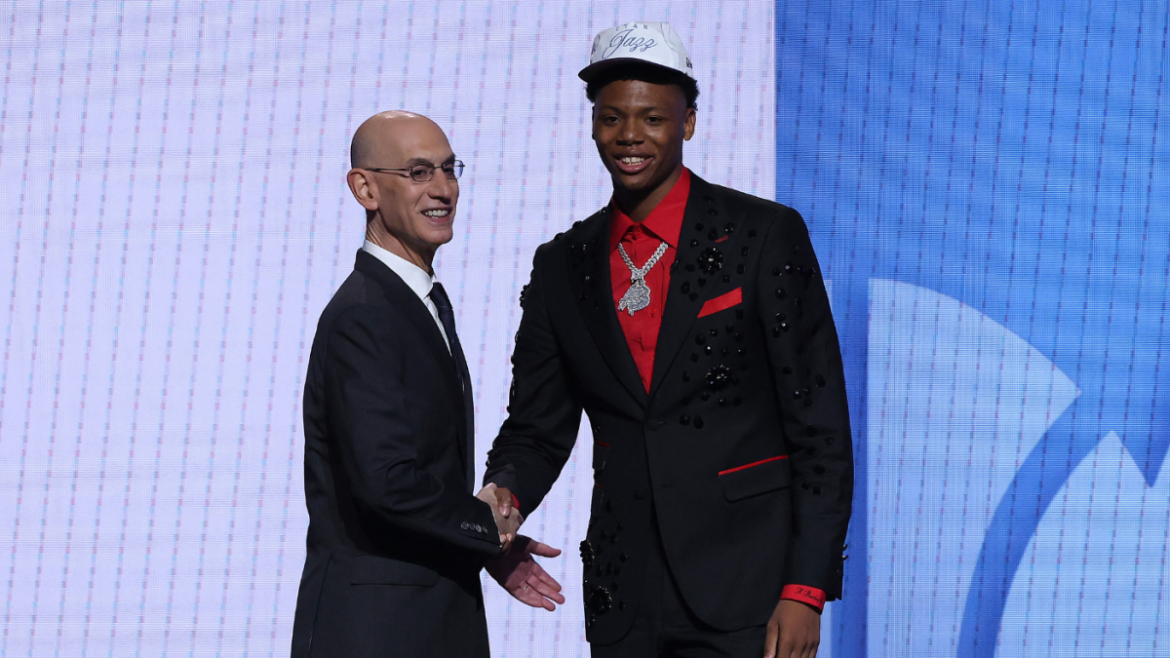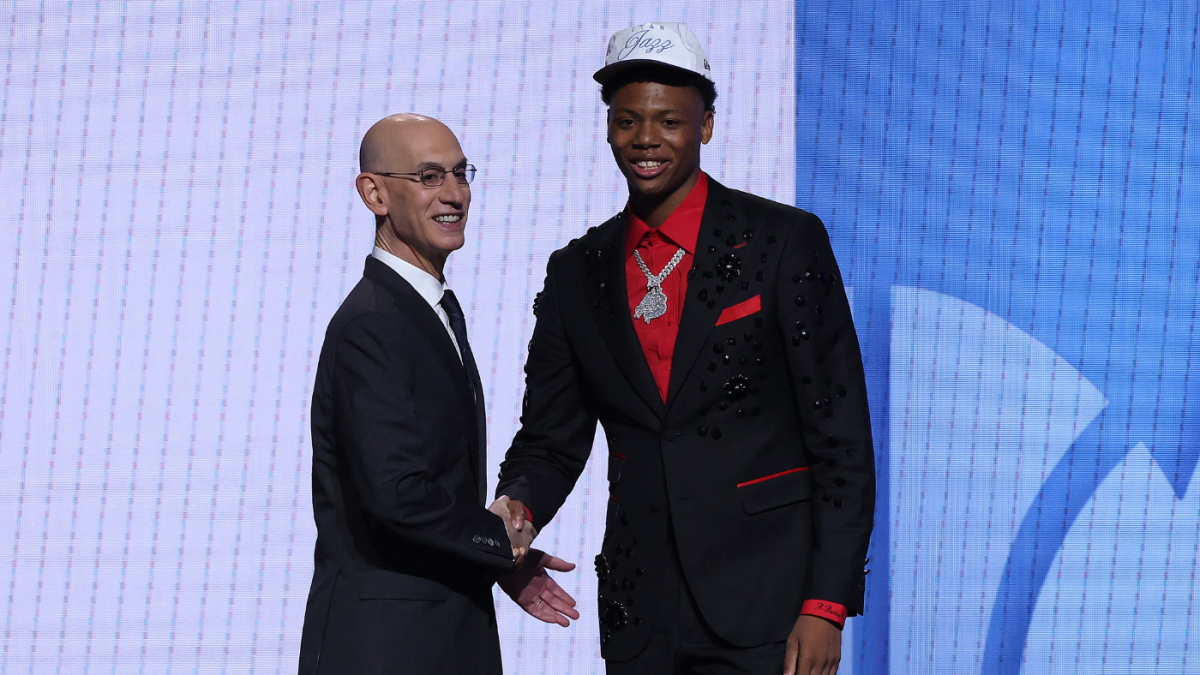The 2025 NBA Draft was a spectacle of anticipation, intrigue, and unexpected twists, none more captivating than the selection of Ace Bailey by the Utah Jazz with the fifth overall pick. Bailey, a consensus top-three talent out of Rutgers, had been the subject of intense speculation leading up to the draft, with reports suggesting he would refuse to report to any team outside the top three. When the Jazz defied expectations by selecting him at No. 5, it set the stage for a high-stakes showdown between player and franchise, one that could reshape the dynamics of the NBA draft process.
Ace Bailey: The Prospect and the Persona
Ace Bailey’s rise to NBA stardom was built on a combination of athleticism, versatility, and a relentless work ethic. Standing at 6’7″ with a 7’1″ wingspan, Bailey possesses the physical tools to excel as a modern NBA wing. His perimeter skills, defensive tenacity, and playmaking ability made him a top-three prospect in most draft rankings. However, as the draft approached, Bailey’s public image became as much a topic of discussion as his basketball skills.
Reports emerged that Bailey’s camp, led by agent Omar Cooper, had informed at least one team with a top-five pick that their client would not report if selected. The exact motivations behind this stance remain unclear, but speculation ran rampant. Was this a leverage play to secure a preferred destination, or was it an attempt to avoid what Bailey’s camp perceived as a poor fit? The ambiguity only added to the drama, as teams and analysts alike tried to decipher the true intentions behind Bailey’s hardline approach.
Draft Night: When Rumor Became Reality
The tension in the draft green room was palpable as Bailey waited to hear his name called. Many expected him to be selected within the first three picks, or at the very least, to avoid the teams he had reportedly warned. Instead, the Utah Jazz, one of the teams allegedly cautioned off, selected Bailey with the fifth pick. The decision was a bold move, one that could either solidify the Jazz as a forward-thinking franchise or backfire spectacularly if Bailey refused to report.
For the Jazz, the decision to draft Bailey was a calculated risk. The team’s roster already boasted a wealth of young talent, and while Salt Lake City may not have been at the top of every star’s list of desired destinations, the potential upside of adding a top-three talent at the fifth pick was too enticing to pass up. The Jazz’s front office gambled that Bailey would ultimately report, betting on the long-term benefits of securing a player of his caliber.
Why Would Bailey Want to Shape His Destiny?
Bailey’s hardline approach to the draft process is not without precedent. Top prospects have long used pre-draft workouts, medical information, and agent posturing to exert influence over their first NBA stop. In some cases, these efforts have been successful, such as Kobe Bryant’s maneuvering to join the Los Angeles Lakers or Eli Manning’s orchestrated exit from the San Diego Chargers in the 2004 NFL Draft. However, Bailey’s situation is unique in its public nature and the potential consequences.
Several factors may have motivated Bailey’s camp to take such a firm stance:
– Market and Exposure: Bailey may have been seeking a larger market with broader endorsement opportunities or a team with a clearer path to contention. Playing in a major market can significantly impact a player’s marketability and earning potential beyond their NBA salary.
– Organizational Stability: Players and their representatives often scrutinize the front office’s acumen, coaching stability, and developmental track record. A team with a history of player development and organizational stability can be more appealing to a young prospect.
– Personal Fit and Culture: The fit between a player and a team’s culture, coaching style, and off-court amenities can greatly influence a rookie’s transition and long-term trajectory. Bailey’s camp may have believed that the Jazz did not offer the ideal environment for his growth.
For Jazz fans, the selection of Bailey is a double-edged sword. On one hand, the team has added a highly talented player who could become a cornerstone of the franchise. On the other hand, the public nature of Bailey’s reluctance raises concerns about his commitment to the organization. The coming months will be critical in determining whether this relationship can flourish or flounder.
The NBA’s Draft System Under the Microscope
Bailey’s saga has reignited discussions about the NBA draft system and the extent of player autonomy. The draft is one of the few areas in professional sports where athletes have little to no say in their initial destination. This lack of control has occasionally led to tense standoffs, with players sitting out seasons, declining medical examinations, or refusing to meet with certain teams.
The NBA has historically valued the draft as a mechanism to maintain competitive balance while allowing for player movement. However, as agents become more assertive and players more empowered, the dynamics of the draft process are evolving. The league may need to consider rule tweaks or policy discussions to address the growing tension between teams and player camps.
Potential Outcomes: What’s Next for Bailey and the Jazz?
The path forward for Bailey and the Jazz is fraught with uncertainty, but several potential outcomes could shape the narrative moving forward.
A. Bailey Reports and Plays
If Bailey decides to report to the Jazz, he will arrive with something to prove. The team will have secured one of the most talented players in the draft class, a slasher, shot creator, and defensive asset. However, the risk of lingering resentment or an icy start could derail team chemistry. The Jazz’s infrastructure has a proven track record of developing young talent, and Bailey could thrive if given the right support and guidance.
B. Bailey Holds Out or Requests a Trade
Should Bailey choose to dig in his heels, the Jazz could face a prolonged holdout or an immediate trade request. Such scenarios rarely benefit the team, as seen in the cases of Ben Simmons and James Harden. The Jazz would likely attempt to trade Bailey, but doing so from a position of weakness could result in an unfavorable deal.
C. The NBA Intervenes
In extreme cases, holdouts can lead to broader league discussions about the draft system. The NBA may need to reevaluate the balance between competitive equality and player movement, potentially implementing rule changes to address the growing tension between teams and players.
Impact on Player Representation and Future Drafts
Bailey’s maneuver raises the stakes for future player representation. As agents become more assertive, the game of chicken between teams and player camps may intensify. If Bailey successfully lands elsewhere, expect more prospects to attempt similar strategies. Conversely, if the Jazz relationship works out—or if Bailey’s stand costs him money and opportunity—the opposite could prove true.
For the players’ union and the league, this scenario is a real-life test of how much leverage a blue-chip prospect holds and whether draft positioning can truly be “gamed.”
Conclusion: An Uncertain Alliance Begins
Ace Bailey’s journey from top-three talent to the fifth pick, despite warnings and withheld workouts, is more than just draft-night drama—it’s a case study in modern player empowerment and the enduring unpredictability of the NBA lottery. The Utah Jazz have bet on talent over tension, hoping to prove that an initial reluctance can be overcome in the name of opportunity and growth.
Whether this alliance turns acrimonious or becomes the start of something special depends on Bailey’s next steps and the Jazz’s ability to welcome, persuade, and develop the gifted swingman they selected amid one of draft night’s biggest storylines. For now, the spotlight and pressure align in Salt Lake City—history watches to see if the gamble pays off.





